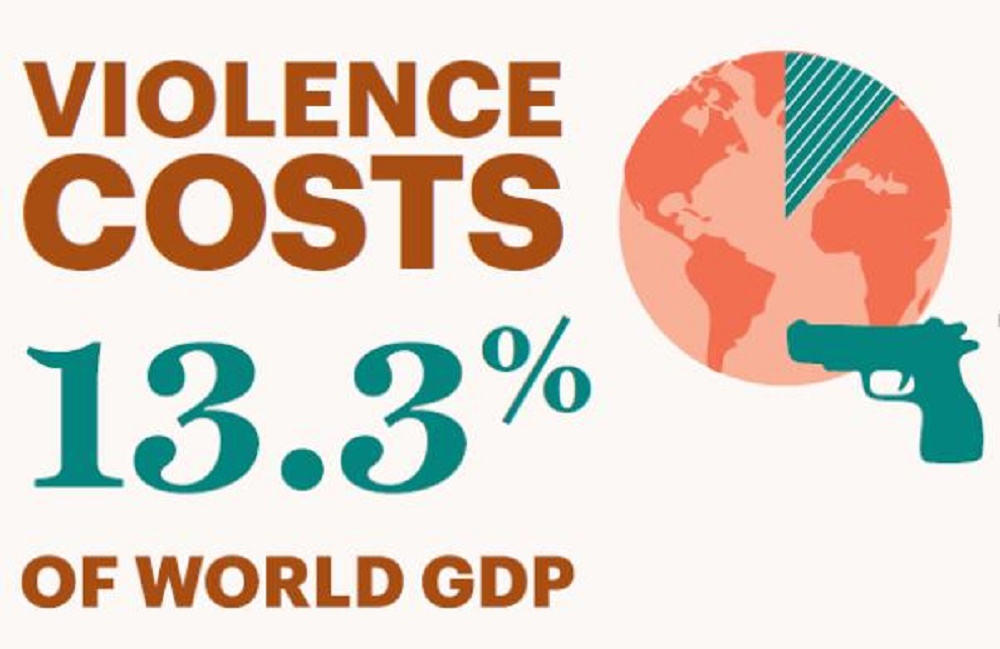The Commodification of Mercenaries
The world has shifted. States that used to symbolize the holders of world order have now become the spoils of war.

Guest speakers: Milt Lauenstein, Jessica Berns, Consultant with Jessica Berns Consulting, Michelle Breslauer, Deputy of Director of Programs, Institute for Economics and Peace (IEP), Nike Carstarphen, Co-Founder of the Alliance for Conflict Transformation (ACT); Joe Bubman, Senior Peacebuilding Advisor, Mercy Corps (MC) and Leslie Wingender, Peacebuilding Advisor, Mercy Corps (MC)
Several studies in the field of conflict resolution are promising to add to the body of data on the cost-effectiveness and impact of mediation.
The Institute for Economics and Peace (IEP) is publishing in April 2017 their research on the cost-effectiveness of peace-building with some stark comparison to the cost of violence. They estimated the cost of conflict to be $13.6 trillion in 2015, making up 13.3% of the world's GDP. From this spending, peacebuilding activities account for less than 1% of the cost of conflict. The funds spent on mediation is but an even tinier portion of that budget.
Exacerbating the disparity, is that peace-building activities are unevenly distributed across countries and issues. Conflict-affected countries make up only 24% of peace-building expenditures.
The study shows that investing in peace-building is in fact beneficial for peace-building and increases economic return to the global economy.
In Rwanda, for example, after measuring almost 20 years of peace-building expenditures (1995-2014), IEP estimated that the cost-effectiveness ratio was 1:16, meaning that for every dollar invested in peace-building the cost of conflict is reduced by $16.
The U.S. Institute of Peace (USIP) is also close to publishing its review of 25 years of USIP grant-funded dialogue projects and its contribution to peace. Using both qualitative and quantitative analysis, the Alliance for Conflict Transformation (ACT) was tasked to evaluate 105 projects (subsequently categorized as top-down, middle-out and bottom-up approaches). ACT conducted a desk review, supplemented by field research on 23 of these projects, to assess the transfer effect from these projects beyond the direct participants.
ACT defined success and impact as dialogues that were efficient, effective, sustainable and relevant, as well as had significant transfer effects. It uncovered that USIP grant-funded dialogues integrated a number of different methods to transfer dialogue benefits beyond the participants, ranging from the dissemination of products/materials (books, articles, etc.); triggering a ripple effect using various spheres of influence (common in bottom-up approaches); political advocacy and community action by the participants; using the media; a cascade model of capacity building via training (each one, teach one); and the creation of networks and on-going dialogue platforms.
The most successful dialogue projects were those that bridged the gap between grassroots/civil society and decision-makers/opinion shapers, included multiple transfer methods and a strong sustainability plan.
The primary recommendations that emerged from the study to maximize the impact of dialogues, were to:
Also striking were the results of the Purdue Peace Project (PPP) as described by Milt Lauenstein, funder of PPP. The PPP identifies situation where violence threatens to break out and engages with local community members and leaders to prevent outbreaks. Dialogues are locally led and locally driven prevention effort. Projects have typically cost only a few thousands of dollars and have taken only about 18 months to resolve the conflicts. Peace has been sustained in areas where PPP is present.

Mercy Corps (MC), using mediation to help resolve land conflicts (border, occupation, property rights…) in Guatemala, is another example of mediation's effectiveness. The findings from research conducted with 42 families who reached an agreement using an impartial third-party revealed that mediation yielded favorable result and affected the parties’ satisfaction with the results, trust-building, a reduction of violence as well as expanded cultivation. Reviewing more broadly the cost-effectiveness of these types of programs in a number of different countries, MC was able to determine that for roughly $8 million dollars, they were able to resolve 700 land conflicts, benefiting 32,796 families at a cost of $244 per family.
While mediation has shown to be a low-cost alternative to violence, determining which peace-building activities are most effective still requires additional research. Most programming is based on qualitative analysis, anecdotes, and personal preferences. Activities called peace-building aimed at other objectives then conflict resolution, are counted as peace-building making it even harder to determine peace-building cost-effectiveness.
The resources of the entire peace-building field are tiny when compared to what is spent on warfare, so it is critically important that they be well spent.
Milt Lauerstein
To the extent that more resources are focused on work that produces real results, much more can be achieved, meaning that much needs to be done to invest in research if we are to avoid “flying blind.”
DOCUMENTS
Institute for Economic Peace, "Cost-effectiveness of Peacebuilding" presentation (January 2017)
Alliance for Conflict Transformation, "USIP Dialogue Projects and Transfer" presentation (2016)
Mercy Corps, "Cost-effectiveness of mediating land conflicts in Guatemala" presentation (January 2017)
United States Institute of Peace, "What Works in Facilitated Dialogue Projects" Special Report 407 (June 2017)
Frontier Design Group, "Cost-effectiveness of Peacebuilding: exploring the possibilities" FULL report (September 2017)
----
[1] The International Mediation Community of Practice (IMCP) mediation IMPACT working group is co-led by CIT, MC and IPSI. The IMCP provides an informal platform for discussion between mediation practitioners, trainers, academics and providers of mediation support services who actively engage in international third-party conflict transformation, to strengthen our skills and increase the use of dialogue processes in complex conflict contexts. The IMCP is an initiative of Communities in Transition (CIT). Our guest speakers for this event included Milt Lauenstein, Jessica Berns, Jessica Berns Consulting, Michelle Breslauer, Institute for Economics and Peace (IEP), Nike Carstarphen, Alliance for Conflict Transformation (ACT); Joe Bubman, Mercy Corps (MC) and Leslie Wingender, Mercy Corps (MC).
[2] IEP defines peace-building activities as including basic safety and security, inclusive political process, and core government functions.
